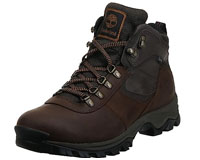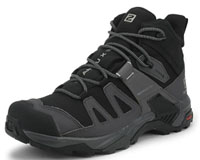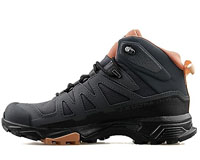Best Work Boots for Men and Women
60 views
Skip to first unread message
Franzen Cube
Sep 19, 2023, 1:09:19 AM9/19/23
to Best Work Boots
Best Work Boots: Top Picks for Every Use
Work boots are an essential piece of personal protective equipment (PPE) designed to provide safety, comfort, and support for individuals engaged in various occupations and industries. Whether you work in construction, manufacturing, agriculture, or any other labor-intensive field, investing in the right pair of work boots is crucial for ensuring your well-being and productivity on the job.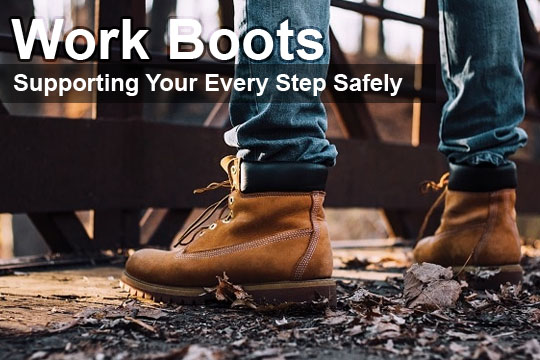

Understanding the Importance of Work Boots
Workplace safety should always be a top priority for employers and employees alike. Numerous hazards, such as heavy machinery, sharp objects, slippery surfaces, and electrical dangers, are common in many work environments. Without the proper protection, workers are at an increased risk of injuries, accidents, and long-term health issues.
One of the primary reasons work boots are so critical is that they provide essential foot protection. They act as a barrier between the feet and potential workplace hazards, reducing the chances of foot injuries like cuts, punctures, and crush injuries. Additionally, work boots with safety toes can safeguard against heavy objects accidentally falling on the feet, preventing serious harm.
Moreover, work boots offer ankle support, which is vital for occupations that involve walking on uneven surfaces or carrying heavy loads. Ankle injuries can be painful and take a long time to heal, causing considerable disruption to both work and personal life.
Composite Toe Work Boots
Soft Toe Work Boots
Insulated Work Boots
Waterproof Work Boots
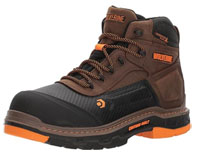
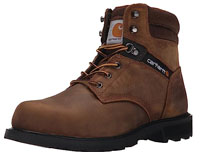
Recommendations for Women: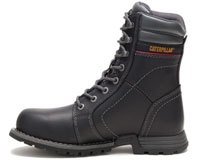

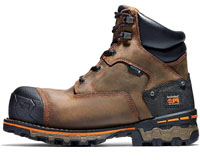
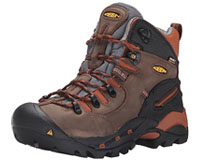
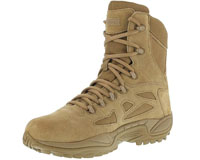
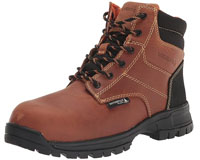
Work Boots for Oil and Gas Industry

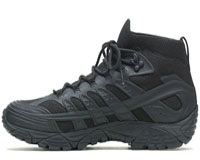
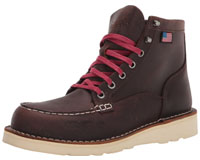
Work Boots for Landscapers and Gardeners
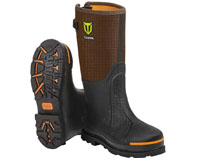
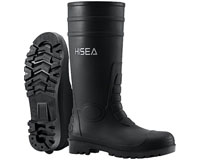

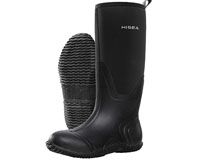
Work Boots for Warehouse Workers
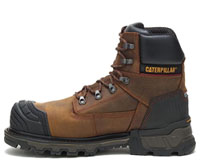

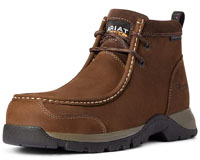
Work Boots for Hikers and Outdoor Enthusiasts
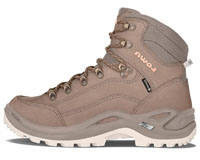
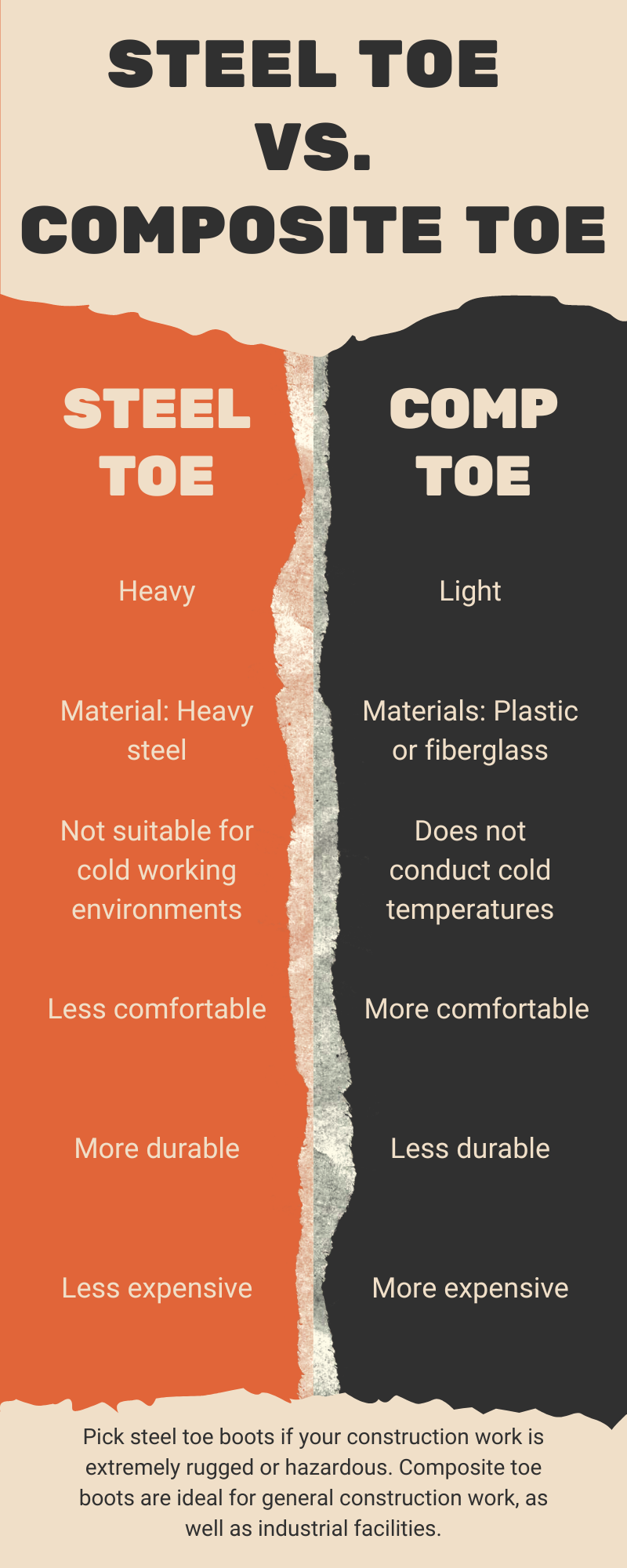
3. Comfort and Support:
Comfort is of paramount importance for workers who spend extended periods on their feet. Look for work boots with ample cushioning in the midsole and footbed, as well as padded collars and tongues for added comfort. Some boots come with dual-density midsoles that provide both cushioning and support.
VII. How to Break In New Work Boots
Breaking in new work boots is essential to ensure they become comfortable and adapt to the shape of your feet. Without proper break-in, new boots may cause blisters or discomfort during extended wear. Here's how to break in work boots comfortably:
1. Importance of Breaking In Work Boots:
New work boots often have stiff leather and materials, which can be uncomfortable during the initial wear. Breaking in the boots allows the materials to soften and mold to the contours of your feet, providing a custom fit and improved comfort.
2. Step-by-Step Guide to Breaking In Work Boots Comfortably:
Cleaning and Storing Work Boots Properly
Regularly clean your work boots to remove dirt, mud, and other debris that can accumulate during your workday. Use a soft brush or a damp cloth to wipe off any surface grime. Avoid using harsh chemicals that can damage the materials or strip away protective coatings. For leather work boots, consider using a mild soap specially formulated for leather cleaning.
Workplace safety should always be a top priority for employers and employees alike. Numerous hazards, such as heavy machinery, sharp objects, slippery surfaces, and electrical dangers, are common in many work environments. Without the proper protection, workers are at an increased risk of injuries, accidents, and long-term health issues.
One of the primary reasons work boots are so critical is that they provide essential foot protection. They act as a barrier between the feet and potential workplace hazards, reducing the chances of foot injuries like cuts, punctures, and crush injuries. Additionally, work boots with safety toes can safeguard against heavy objects accidentally falling on the feet, preventing serious harm.
Moreover, work boots offer ankle support, which is vital for occupations that involve walking on uneven surfaces or carrying heavy loads. Ankle injuries can be painful and take a long time to heal, causing considerable disruption to both work and personal life.
How the Right Work Boots Enhance Safety and Performance
Investing in high-quality work boots can significantly enhance safety and job performance. Here are some ways the right pair of work boots achieves this:
Investing in high-quality work boots can significantly enhance safety and job performance. Here are some ways the right pair of work boots achieves this:
- Slip Resistance: Slippery surfaces can be prevalent in workplaces, especially in areas where liquids are present. Work boots with slip-resistant outsoles provide better traction, reducing the likelihood of slips, trips, and falls.
- Electrical Hazard Protection: For those working around electrical equipment or in environments with potential electrical hazards, certain work boots are designed with electric shock-resistant soles to minimize the risk of electrical injuries.
- Waterproofing: In wet or rainy conditions, waterproof work boots keep the feet dry and comfortable, preventing water-related skin issues and providing better overall foot health.
- Insulation: In extreme weather conditions, insulated work boots help regulate foot temperature, keeping feet warm in cold environments and cool in hot climates.
- Comfort and Fatigue Reduction: Comfortable work boots reduce fatigue, allowing workers to stay focused and productive throughout long shifts. Some work boots come with cushioned insoles and ergonomic design features to enhance comfort.
- Durability and Longevity: High-quality work boots are built to withstand the demands of tough job sites, ensuring they last longer and provide reliable protection over an extended period.
- Support for Arch and Heel: Properly designed work boots provide support for the arch and heel, reducing strain on the foot's soft tissues and minimizing the risk of injuries like plantar fasciitis.
- Breathability: Work boots with breathable materials help prevent foot odor and discomfort caused by sweating, making them more pleasant to wear during long working hours.
Types of Work Boots
When it comes to work boots, there is a wide variety of options available to cater to different work environments and safety needs. Here are some of the most common types of work boots:
Steel Toe Work Boots
When it comes to work boots, there is a wide variety of options available to cater to different work environments and safety needs. Here are some of the most common types of work boots:
Steel Toe Work Boots
Steel toe work boots are among the most popular and widely used types of work boots. They are designed with a protective cap made of steel that covers the toes, providing excellent protection against heavy falling objects and compression hazards. Steel toe boots are especially prevalent in construction, manufacturing, and warehouse industries, where the risk of foot injuries from impacts is higher.
Composite Toe Work Boots
Similar to steel toe boots, composite toe work boots offer protective reinforcement for the toes. However, instead of steel, they use non-metallic materials like Kevlar, carbon fiber, or plastic composites. Composite toe boots are a preferred choice for workers in environments where metal detectors are used or where electrical hazards are a concern, as they are non-metallic and do not conduct electricity.
Soft Toe Work Boots
Soft toe work boots, also known as plain toe or non-safety toe boots, do not have a protective toe cap. These boots are ideal for workplaces where there is no risk of heavy object impacts or compression hazards. Soft toe work boots are often favored for their lighter weight and increased comfort, making them suitable for jobs that don't require specific safety toe protection.
Insulated Work Boots
For those working in cold climates or freezer environments, insulated work boots are essential. These boots feature added insulation in the lining, helping to keep the feet warm and protected from freezing temperatures. Insulated work boots are commonly used in industries like agriculture, forestry, and construction, where workers are exposed to harsh weather conditions.
Waterproof Work Boots
Workers who often encounter wet or damp conditions can benefit from waterproof work boots. These boots are made with waterproof materials and seam-sealed construction, ensuring that water, mud, and other liquids do not penetrate the boots. Waterproof work boots are suitable for various industries, including agriculture, fishing, and outdoor maintenance.
Each type of work boot mentioned above serves specific purposes, catering to various workplace safety requirements and environmental conditions. When selecting the right work boots, it's essential to consider the nature of the job, potential hazards, and the level of comfort required for the tasks at hand.
Each type of work boot mentioned above serves specific purposes, catering to various workplace safety requirements and environmental conditions. When selecting the right work boots, it's essential to consider the nature of the job, potential hazards, and the level of comfort required for the tasks at hand.
Selecting the Right Work Boots for Your Occupation
Choosing the right work boots tailored to your specific occupation is a critical aspect of ensuring safety, comfort, and optimal performance in the workplace. Different professions come with unique challenges, hazards, and demands, which is why work boot selection should be a well-informed decision. Let's delve deeper into the considerations for selecting the most suitable work boots for various occupations:
Work Boots for Construction Workers
Choosing the right work boots tailored to your specific occupation is a critical aspect of ensuring safety, comfort, and optimal performance in the workplace. Different professions come with unique challenges, hazards, and demands, which is why work boot selection should be a well-informed decision. Let's delve deeper into the considerations for selecting the most suitable work boots for various occupations:
Work Boots for Construction Workers
Construction sites are bustling with activity, and workers are exposed to a myriad of potential hazards daily. From heavy machinery and falling debris to sharp objects and uneven terrain, construction workers face numerous risks.
To provide the necessary protection, durable work boots with puncture-resistant soles are essential. Steel toe or composite toe work boots offer reliable toe protection against impacts and compression. Slip-resistant outsoles are equally vital for preventing accidents on slippery surfaces and safeguarding against trips and falls. Ankle support is an additional feature that construction workers may benefit from, especially when navigating uneven ground or lifting heavy loads.
Recommendations for Men:


Recommendations for Women:


Work Boots for Electricians
Electricians deal with the inherent risks of electrical hazards on the job. For these professionals, work boots with non-conductive properties are crucial to avoid electrical shocks. Composite toe boots are an excellent choice, as they offer toe protection without conducting electricity.
Apart from electrical safety, slip-resistant soles are valuable for maintaining stability while working on different surfaces. Comfort is also a key consideration, as electricians may spend long hours standing or climbing. Padded insoles and supportive arches can help reduce foot fatigue during extended work shifts.
Recommendations for Men:


Recommendations for Women:


Work Boots for Oil and Gas Industry
The oil and gas industry present a unique set of challenges, including slippery surfaces, potential exposure to chemicals, and rugged terrains. Workers in this field require work boots that can withstand harsh conditions and offer sufficient protection.
Waterproof work boots with slip-resistant outsoles are ideal for navigating oil rigs and other work environments where liquids may be present. Chemical-resistant materials add an extra layer of protection against hazardous substances. For enhanced safety, steel toe or composite toe boots can safeguard against impacts and compression from heavy equipment.
Recommendations for Men:


Recommendations for Women:

Work Boots for Landscapers and Gardeners
Landscapers and gardeners spend a significant amount of time outdoors, facing various weather conditions and navigating uneven terrain. For these professionals, comfort and versatility are paramount.
Waterproof work boots are essential for keeping feet dry while working in damp conditions. Slip-resistant outsoles are equally important to maintain traction on wet or muddy surfaces. Additionally, breathable materials can help prevent foot discomfort during hot weather, ensuring feet remain fresh and dry throughout the day.
Recommendations for Men:


Recommendations for Women:


Work Boots for Warehouse Workers
Warehouse workers deal with a wide range of tasks, from lifting heavy objects to moving swiftly across smooth warehouse floors. Safety is of utmost importance, and therefore, work boots with protective toe caps are necessary to guard against falling objects and compression. Steel toe or composite toe boots fit the bill for this purpose.
Slip-resistant outsoles provide stability when maneuvering through potentially hazardous areas. Comfort is also crucial for warehouse workers, as they may spend long hours on their feet. Padded insoles and lightweight designs can reduce foot fatigue and improve overall well-being during strenuous workdays.
Recommendations for Men:


Recommendations for Women:

Work Boots for Hikers and Outdoor Enthusiasts
For hikers and outdoor enthusiasts, work boots that mimic the ruggedness and performance of hiking boots are essential. Sturdy construction and ankle support provide stability while navigating rough terrains. Slip-resistant outsoles ensure surefootedness on varying surfaces, preventing slips and falls. Insulated work boots help keep feet warm in cold weather, while waterproof features protect against wet conditions during outdoor adventures.

IV. Work Boots for Special Situations
While selecting work boots based on occupation is crucial, some work environments and situations require specialized features to address specific challenges. Here are work boots designed for special situations:
Electrical Hazard-Resistant Work Boots: For occupations that involve working around electrical equipment or in areas with potential electrical hazards, electrical hazard (EH) resistant work boots are essential. These boots are constructed with non-conductive materials to help prevent electrical currents from passing through the footwear and reaching the wearer's body. EH-rated boots offer an additional layer of protection against electrical shocks, making them a vital choice for electricians, utility workers, and others exposed to electrical risks.
Cold Weather and Winter Work Boots: Working in freezing temperatures and snowy conditions demands work boots equipped to handle extreme cold. Cold weather and winter work boots feature insulation in the lining to keep feet warm and protected in icy environments. Waterproof and moisture-wicking properties are also beneficial to prevent snow and water from seeping into the boots. These boots are favored by outdoor workers, construction crews, and utility workers tackling winter conditions.
Hot Weather and Summer Work Boots: In scorching hot weather, it's essential to wear work boots that keep feet cool and comfortable. Hot weather and summer work boots are made with breathable materials to allow proper airflow, reducing heat buildup inside the boots. Moisture-wicking linings help manage sweat and maintain dryness, preventing discomfort and potential foot issues. These boots are particularly suitable for outdoor workers, agricultural workers, and those in desert climates.
Slip-On Work Boots vs. Lace-Up Work Boots: Slip-on work boots and lace-up work boots each offer unique advantages, and the choice between the two depends on personal preference and job requirements. Slip-on work boots are easy to put on and take off, making them convenient for workers who frequently need to remove their footwear. They are popular in industries where time is of the essence, such as emergency responders or firefighters.
While selecting work boots based on occupation is crucial, some work environments and situations require specialized features to address specific challenges. Here are work boots designed for special situations:
Electrical Hazard-Resistant Work Boots: For occupations that involve working around electrical equipment or in areas with potential electrical hazards, electrical hazard (EH) resistant work boots are essential. These boots are constructed with non-conductive materials to help prevent electrical currents from passing through the footwear and reaching the wearer's body. EH-rated boots offer an additional layer of protection against electrical shocks, making them a vital choice for electricians, utility workers, and others exposed to electrical risks.
Cold Weather and Winter Work Boots: Working in freezing temperatures and snowy conditions demands work boots equipped to handle extreme cold. Cold weather and winter work boots feature insulation in the lining to keep feet warm and protected in icy environments. Waterproof and moisture-wicking properties are also beneficial to prevent snow and water from seeping into the boots. These boots are favored by outdoor workers, construction crews, and utility workers tackling winter conditions.
Hot Weather and Summer Work Boots: In scorching hot weather, it's essential to wear work boots that keep feet cool and comfortable. Hot weather and summer work boots are made with breathable materials to allow proper airflow, reducing heat buildup inside the boots. Moisture-wicking linings help manage sweat and maintain dryness, preventing discomfort and potential foot issues. These boots are particularly suitable for outdoor workers, agricultural workers, and those in desert climates.
Slip-On Work Boots vs. Lace-Up Work Boots: Slip-on work boots and lace-up work boots each offer unique advantages, and the choice between the two depends on personal preference and job requirements. Slip-on work boots are easy to put on and take off, making them convenient for workers who frequently need to remove their footwear. They are popular in industries where time is of the essence, such as emergency responders or firefighters.
On the other hand, lace-up work boots provide a secure and adjustable fit, ensuring the boots stay in place during physically demanding tasks. They are a popular choice for workers requiring added ankle support or a snug fit.
V. Key Features to Consider
When searching for the best work boots, it's essential to evaluate various key features that contribute to both safety and comfort. As work boots serve as the primary line of defense against workplace hazards, making an informed decision can significantly impact a worker's well-being and job performance. Here are some crucial aspects to consider when selecting the ideal work boots:
1. Safety Standards and Certifications:
Work boots should adhere to specific safety standards and certifications to ensure they provide adequate protection against the potential hazards of the job. For instance, in the United States, the American Society for Testing and Materials (ASTM) sets safety standards for protective footwear. In Europe, the European Norm (EN) standards regulate similar safety requirements. Look for work boots that clearly indicate their compliance with relevant safety standards, including features such as safety toe caps, metatarsal guards, electrical hazard resistance, or puncture protection. These certifications ensure that the boots have undergone rigorous testing and meet the necessary safety criteria for the respective work environment.
2. Material Quality and Durability:
The durability of work boots is heavily influenced by the materials used in their construction. Full-grain leather is a popular choice for work boot uppers due to its exceptional durability, abrasion resistance, and ability to withstand harsh conditions. Nubuck leather, which is sanded to create a velvety surface, is also durable and offers a more refined appearance.
When searching for the best work boots, it's essential to evaluate various key features that contribute to both safety and comfort. As work boots serve as the primary line of defense against workplace hazards, making an informed decision can significantly impact a worker's well-being and job performance. Here are some crucial aspects to consider when selecting the ideal work boots:
1. Safety Standards and Certifications:
Work boots should adhere to specific safety standards and certifications to ensure they provide adequate protection against the potential hazards of the job. For instance, in the United States, the American Society for Testing and Materials (ASTM) sets safety standards for protective footwear. In Europe, the European Norm (EN) standards regulate similar safety requirements. Look for work boots that clearly indicate their compliance with relevant safety standards, including features such as safety toe caps, metatarsal guards, electrical hazard resistance, or puncture protection. These certifications ensure that the boots have undergone rigorous testing and meet the necessary safety criteria for the respective work environment.
2. Material Quality and Durability:
The durability of work boots is heavily influenced by the materials used in their construction. Full-grain leather is a popular choice for work boot uppers due to its exceptional durability, abrasion resistance, and ability to withstand harsh conditions. Nubuck leather, which is sanded to create a velvety surface, is also durable and offers a more refined appearance.
Additionally, some work boots are made from synthetic materials that provide a balance between affordability and performance. When assessing material quality, pay attention to the stitching, reinforcements, and overall construction to ensure the work boots are built to withstand the rigors of the job.

3. Comfort and Support:
Comfort is of paramount importance for workers who spend extended periods on their feet. Look for work boots with ample cushioning in the midsole and footbed, as well as padded collars and tongues for added comfort. Some boots come with dual-density midsoles that provide both cushioning and support.
An ergonomic design that follows the natural contours of the foot can reduce fatigue and increase overall comfort. Arch support is essential for maintaining proper foot alignment and reducing strain on the feet, making it particularly crucial for workers with flat feet or specific foot conditions. Additionally, work boots with shock-absorbing properties can lessen the impact on joints, enhancing comfort during physically demanding tasks.
4. Traction and Slip-Resistance:
Slips, trips, and falls are common causes of workplace injuries, making slip-resistant work boots a crucial choice for workers in various industries. Work boots with slip-resistant outsoles are engineered with specialized tread patterns and rubber compounds to provide optimal traction on slippery surfaces. This feature is particularly valuable in environments where water, oil, or other substances pose a slipping risk. Slip-resistant boots ensure that workers can maintain stability and confidently navigate hazardous areas, reducing the likelihood of accidents.
5. Breathability and Moisture-Wicking Properties:
Work environments with high temperatures or physically demanding tasks can cause feet to sweat profusely, leading to discomfort and foot odor. To address this issue, work boots with breathable materials facilitate air circulation, keeping feet cool and dry. Moisture-wicking linings are another beneficial feature that helps manage sweat, drawing moisture away from the feet and promoting a dry and comfortable interior. Well-ventilated work boots contribute to foot health and can significantly improve a worker's overall experience on the job.
6. Weight and Flexibility:
The weight and flexibility of work boots can influence a worker's agility and overall comfort. While some occupations demand heavier-duty boots to provide maximum protection, others may benefit from lightweight and more flexible options that allow for ease of movement. Workers who frequently need to walk long distances, climb ladders, or engage in physically demanding tasks may prefer lighter work boots that do not impede their mobility.
4. Traction and Slip-Resistance:
Slips, trips, and falls are common causes of workplace injuries, making slip-resistant work boots a crucial choice for workers in various industries. Work boots with slip-resistant outsoles are engineered with specialized tread patterns and rubber compounds to provide optimal traction on slippery surfaces. This feature is particularly valuable in environments where water, oil, or other substances pose a slipping risk. Slip-resistant boots ensure that workers can maintain stability and confidently navigate hazardous areas, reducing the likelihood of accidents.
5. Breathability and Moisture-Wicking Properties:
Work environments with high temperatures or physically demanding tasks can cause feet to sweat profusely, leading to discomfort and foot odor. To address this issue, work boots with breathable materials facilitate air circulation, keeping feet cool and dry. Moisture-wicking linings are another beneficial feature that helps manage sweat, drawing moisture away from the feet and promoting a dry and comfortable interior. Well-ventilated work boots contribute to foot health and can significantly improve a worker's overall experience on the job.
6. Weight and Flexibility:
The weight and flexibility of work boots can influence a worker's agility and overall comfort. While some occupations demand heavier-duty boots to provide maximum protection, others may benefit from lightweight and more flexible options that allow for ease of movement. Workers who frequently need to walk long distances, climb ladders, or engage in physically demanding tasks may prefer lighter work boots that do not impede their mobility.
On the other hand, heavy-duty work boots may be necessary for professions where additional protection against impact, compression, or puncture hazards is required.
7. Arch Support and Insole Options:
The unique foot anatomy of individuals may require different levels of arch support. Some work boots come with built-in arch support to promote proper foot alignment and alleviate strain on the feet. Workers with specific foot conditions, such as flat feet or high arches, may benefit from work boots that accommodate custom orthotics or removable insoles. Having the option to insert orthotic inserts allows workers to tailor their footwear to their individual needs, enhancing comfort and reducing the risk of foot-related issues.
When evaluating work boots, it's essential to strike a balance between safety features, comfort, and functionality. Workers should assess their individual job requirements, workplace hazards, and personal preferences to find work boots that offer the best combination of these key features. By investing in the right work boots, individuals can ensure they are adequately protected and equipped to handle the challenges of their occupation, leading to improved job performance and overall well-being.
7. Arch Support and Insole Options:
The unique foot anatomy of individuals may require different levels of arch support. Some work boots come with built-in arch support to promote proper foot alignment and alleviate strain on the feet. Workers with specific foot conditions, such as flat feet or high arches, may benefit from work boots that accommodate custom orthotics or removable insoles. Having the option to insert orthotic inserts allows workers to tailor their footwear to their individual needs, enhancing comfort and reducing the risk of foot-related issues.
When evaluating work boots, it's essential to strike a balance between safety features, comfort, and functionality. Workers should assess their individual job requirements, workplace hazards, and personal preferences to find work boots that offer the best combination of these key features. By investing in the right work boots, individuals can ensure they are adequately protected and equipped to handle the challenges of their occupation, leading to improved job performance and overall well-being.
VI. How to Find the Perfect Fit
Finding the perfect fit for work boots is essential for ensuring comfort, safety, and optimal performance. Ill-fitting boots can lead to discomfort, foot pain, and even increased risk of injuries. Here are some tips to help you achieve the best fit:
Understanding Work Boot Sizing
Work boot sizing can be different from regular shoe sizing, so it's crucial to pay attention to the manufacturer's sizing chart and guidelines. Take accurate measurements of both feet, as one foot might be slightly larger than the other. Consider the width of the boot as well, as some models come in various width options to accommodate different foot shapes. When in doubt, try on different sizes to determine which one offers the best fit.
Trying On Work Boots In-Store vs. Online Shopping
If possible, try on work boots in-store before making a purchase. Visiting a brick-and-mortar store allows you to assess the fit and comfort firsthand. Wear the appropriate work socks you would wear on the job during the fitting process. Walk around the store to ensure there are no pressure points or discomfort. However, if online shopping is the only option, check the retailer's return policy to ensure you can exchange the boots if they don't fit as expected. Keep in mind that trying on boots in-store allows you to get immediate feedback on the fit, making it easier to make an informed decision.
Dealing with Wide or Narrow Feet
Individuals with wide or narrow feet may face challenges finding work boots that fit well. Some work boot models come in different width options, including wide and narrow sizes. If you have wide feet, consider looking for boots labeled as "wide" or "EEE" (extra wide). Conversely, if you have narrow feet, you might find better fit options in "narrow" sizes. Trying on various styles and brands can help determine which work boots cater to your foot width best.
Finding the perfect fit for work boots is essential for ensuring comfort, safety, and optimal performance. Ill-fitting boots can lead to discomfort, foot pain, and even increased risk of injuries. Here are some tips to help you achieve the best fit:
Understanding Work Boot Sizing
Work boot sizing can be different from regular shoe sizing, so it's crucial to pay attention to the manufacturer's sizing chart and guidelines. Take accurate measurements of both feet, as one foot might be slightly larger than the other. Consider the width of the boot as well, as some models come in various width options to accommodate different foot shapes. When in doubt, try on different sizes to determine which one offers the best fit.
Trying On Work Boots In-Store vs. Online Shopping
If possible, try on work boots in-store before making a purchase. Visiting a brick-and-mortar store allows you to assess the fit and comfort firsthand. Wear the appropriate work socks you would wear on the job during the fitting process. Walk around the store to ensure there are no pressure points or discomfort. However, if online shopping is the only option, check the retailer's return policy to ensure you can exchange the boots if they don't fit as expected. Keep in mind that trying on boots in-store allows you to get immediate feedback on the fit, making it easier to make an informed decision.
Dealing with Wide or Narrow Feet
Individuals with wide or narrow feet may face challenges finding work boots that fit well. Some work boot models come in different width options, including wide and narrow sizes. If you have wide feet, consider looking for boots labeled as "wide" or "EEE" (extra wide). Conversely, if you have narrow feet, you might find better fit options in "narrow" sizes. Trying on various styles and brands can help determine which work boots cater to your foot width best.
VII. How to Break In New Work Boots
Breaking in new work boots is essential to ensure they become comfortable and adapt to the shape of your feet. Without proper break-in, new boots may cause blisters or discomfort during extended wear. Here's how to break in work boots comfortably:
1. Importance of Breaking In Work Boots:
New work boots often have stiff leather and materials, which can be uncomfortable during the initial wear. Breaking in the boots allows the materials to soften and mold to the contours of your feet, providing a custom fit and improved comfort.
2. Step-by-Step Guide to Breaking In Work Boots Comfortably:
- Wear Thick Socks: During the break-in process, wear thick, moisture-wicking socks to provide extra cushioning and reduce friction.
- Start Gradually: Begin by wearing your new work boots for short periods in a controlled environment. This allows your feet to get used to the boots without subjecting them to prolonged stress.
- Use Boot Stretchers: If certain areas of the boots feel tight, consider using boot stretchers to gently widen those areas and alleviate pressure points.
- Apply Leather Conditioner: For leather work boots, apply a suitable leather conditioner to soften the leather and expedite the break-in process.
- Use Moisture and Heat: Dampen the boots with a mixture of water and rubbing alcohol, or wear the boots with damp socks. Then, use a hairdryer on a low setting to apply gentle heat. This combination of moisture and heat can help soften the leather and accelerate the break-in process.
- Walk Around: Take short walks in your new work boots to allow them to conform to your feet. If possible, perform tasks that simulate your regular work activities to aid in the molding process.
- Heel and Toe Flexing: Flex the toes and heels of the boots while wearing them to encourage flexibility and reduce stiffness.
Remember that the break-in period varies depending on the boots' materials and your feet. Be patient and listen to your feet during this process. If you experience persistent discomfort or pain, consider consulting with a professional or the manufacturer for further advice.
Finding the perfect fit and breaking in your new work boots properly are vital steps in ensuring comfort, support, and safety throughout your workday.
Finding the perfect fit and breaking in your new work boots properly are vital steps in ensuring comfort, support, and safety throughout your workday.
VIII. Work Boot Care and Maintenance
Proper care and maintenance are crucial for prolonging the lifespan and performance of your work boots. Regularly cleaning, storing, and addressing minor repairs can ensure your boots remain in top condition for an extended period. Here are some essential tips for caring for and maintaining your work boots:
Proper care and maintenance are crucial for prolonging the lifespan and performance of your work boots. Regularly cleaning, storing, and addressing minor repairs can ensure your boots remain in top condition for an extended period. Here are some essential tips for caring for and maintaining your work boots:
Cleaning and Storing Work Boots Properly
Regularly clean your work boots to remove dirt, mud, and other debris that can accumulate during your workday. Use a soft brush or a damp cloth to wipe off any surface grime. Avoid using harsh chemicals that can damage the materials or strip away protective coatings. For leather work boots, consider using a mild soap specially formulated for leather cleaning.
After cleaning, allow the boots to air dry at room temperature. Avoid using direct heat sources like heaters, as this can cause the leather to dry out and potentially crack. For particularly stubborn stains or dirt, use specialized cleaning products recommended for the specific material of your work boots.
Protecting Against Moisture
Exposure to water and moisture can negatively impact the durability and performance of work boots. To protect against moisture, consider applying a waterproofing treatment to your work boots. This treatment helps repel water and prevents it from seeping into the boots, keeping your feet dry in wet conditions. Waterproofing sprays or waxes can be used on both leather and synthetic work boots. However, for breathable and waterproof membranes such as Gore-Tex, use products specifically designed for these materials to maintain their functionality.
Extending the Lifespan of Work Boots
To extend the lifespan of your work boots, consider rotating between multiple pairs if your job allows it. By alternating between pairs, you allow the boots to air out and recover their shape between wears, reducing wear and tear. Additionally, use suitable boot trees or stuffing to maintain the shape of the boots while they are not in use. Properly storing your work boots in a cool, dry place away from direct sunlight can also help prevent premature deterioration. Avoid leaving your boots in extreme temperatures or damp environments for extended periods, as these conditions can degrade the materials.
Resoling and Repairing Work Boots
With regular use, the outsoles of work boots may wear out over time. Instead of replacing the entire pair of boots, consider resoling them to extend their life. Resoling involves replacing the worn-out outsole with a new one, preserving the upper part of the boots. Many reputable cobblers offer this service, ensuring a quality job that maintains the original design and function of the boots.
Protecting Against Moisture
Exposure to water and moisture can negatively impact the durability and performance of work boots. To protect against moisture, consider applying a waterproofing treatment to your work boots. This treatment helps repel water and prevents it from seeping into the boots, keeping your feet dry in wet conditions. Waterproofing sprays or waxes can be used on both leather and synthetic work boots. However, for breathable and waterproof membranes such as Gore-Tex, use products specifically designed for these materials to maintain their functionality.
Extending the Lifespan of Work Boots
To extend the lifespan of your work boots, consider rotating between multiple pairs if your job allows it. By alternating between pairs, you allow the boots to air out and recover their shape between wears, reducing wear and tear. Additionally, use suitable boot trees or stuffing to maintain the shape of the boots while they are not in use. Properly storing your work boots in a cool, dry place away from direct sunlight can also help prevent premature deterioration. Avoid leaving your boots in extreme temperatures or damp environments for extended periods, as these conditions can degrade the materials.
Resoling and Repairing Work Boots
With regular use, the outsoles of work boots may wear out over time. Instead of replacing the entire pair of boots, consider resoling them to extend their life. Resoling involves replacing the worn-out outsole with a new one, preserving the upper part of the boots. Many reputable cobblers offer this service, ensuring a quality job that maintains the original design and function of the boots.
Additionally, address minor repairs promptly to prevent them from developing into more significant issues. Loose stitching, damaged eyelets, or worn laces should be fixed to maintain the boots' structural integrity.
Oiling and Conditioning
For leather work boots, periodic oiling and conditioning are essential to keep the leather supple and prevent it from drying out and cracking. Use a suitable leather conditioner to moisturize the leather and maintain its durability. Conditioning also enhances the natural water resistance of leather boots. Remember to clean the boots thoroughly before applying the conditioner, as conditioning products can trap dirt and grime if applied to unclean surfaces.
Following Manufacturer Guidelines
Always refer to the manufacturer's care and maintenance guidelines specific to your work boots. Different materials and construction methods may require unique care instructions. Following the manufacturer's recommendations can help you preserve the quality and performance of your work boots. Additionally, some manufacturers offer warranty coverage for their products, and proper care as per their guidelines may be necessary to maintain this coverage.
Regular Inspections
Periodically inspect your work boots for any signs of wear, damage, or potential issues. Check for loose stitching, worn-out outsoles, and damaged components. Catching and addressing problems early can prevent them from worsening and extend the life of your boots.
By adopting these work boot care and maintenance practices, you can ensure your boots remain in excellent condition, providing optimal comfort, protection, and support throughout their useful life. Properly cared-for work boots not only enhance your performance and safety but also represent a wise investment in footwear that will serve you well for years to come.
Oiling and Conditioning
For leather work boots, periodic oiling and conditioning are essential to keep the leather supple and prevent it from drying out and cracking. Use a suitable leather conditioner to moisturize the leather and maintain its durability. Conditioning also enhances the natural water resistance of leather boots. Remember to clean the boots thoroughly before applying the conditioner, as conditioning products can trap dirt and grime if applied to unclean surfaces.
Following Manufacturer Guidelines
Always refer to the manufacturer's care and maintenance guidelines specific to your work boots. Different materials and construction methods may require unique care instructions. Following the manufacturer's recommendations can help you preserve the quality and performance of your work boots. Additionally, some manufacturers offer warranty coverage for their products, and proper care as per their guidelines may be necessary to maintain this coverage.
Regular Inspections
Periodically inspect your work boots for any signs of wear, damage, or potential issues. Check for loose stitching, worn-out outsoles, and damaged components. Catching and addressing problems early can prevent them from worsening and extend the life of your boots.
By adopting these work boot care and maintenance practices, you can ensure your boots remain in excellent condition, providing optimal comfort, protection, and support throughout their useful life. Properly cared-for work boots not only enhance your performance and safety but also represent a wise investment in footwear that will serve you well for years to come.
IX. Best Work Boots for Different Budgets
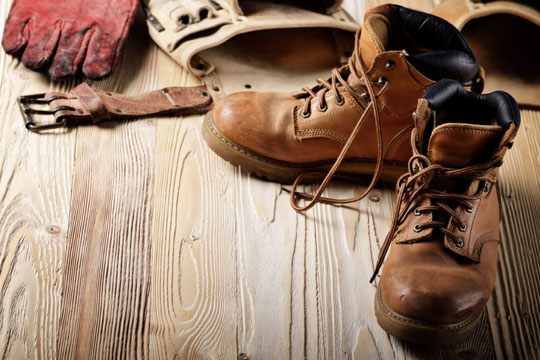

When it comes to work boots, there are options available to suit various budgets. Whether you're looking for high-end work boots with premium features or seeking value-for-money options that don't compromise on quality, making an informed choice is essential. Here are some recommendations for work boots across different budget ranges:
Top High-End Work Boots: High-end work boots are designed with top-notch materials, advanced safety features, and superior craftsmanship. These boots are often built to withstand tough conditions and provide maximum comfort and protection. Some high-end work boots may also incorporate specialized technologies to enhance performance, such as insulation for extreme temperatures or unique tread patterns for enhanced traction. While these boots may come with a higher price tag, they are an excellent investment for those who prioritize durability and premium performance.
Best Value-for-Money Work Boots: Value-for-money work boots strike a balance between quality, features, and affordability. These boots offer a combination of durability, comfort, and safety features without breaking the bank. While they might not have all the premium features of high-end boots, value-for-money options provide excellent performance for the price. They are ideal for those who want reliable work boots without the need for specialized features or added frills.
Budget-Friendly Work Boot Options: Budget-friendly work boots cater to those with limited financial resources but still require reliable footwear for work. While they may lack some of the premium materials and advanced features of high-end or value-for-money boots, budget options can still provide adequate protection and support for basic work needs. These boots are often more straightforward in design and may not have the same level of longevity as higher-priced options. However, they can be a suitable choice for those with short-term work needs or who are on a tight budget.
Remember that when considering work boots for different budgets, it's crucial to prioritize safety, comfort, and fit above all else. The right pair of work boots should offer the necessary protection for your specific job, regardless of the price range. Always read reviews and look for boots with positive feedback on quality, durability, and performance.
As you explore different work boot options, keep in mind that the best choice for you will depend on your unique work environment, specific job requirements, and individual preferences. By carefully assessing your needs and comparing different boots within your budget range, you can find the perfect work boots that offer the best combination of comfort, safety, and value for your hard-earned money.
Top High-End Work Boots: High-end work boots are designed with top-notch materials, advanced safety features, and superior craftsmanship. These boots are often built to withstand tough conditions and provide maximum comfort and protection. Some high-end work boots may also incorporate specialized technologies to enhance performance, such as insulation for extreme temperatures or unique tread patterns for enhanced traction. While these boots may come with a higher price tag, they are an excellent investment for those who prioritize durability and premium performance.
Best Value-for-Money Work Boots: Value-for-money work boots strike a balance between quality, features, and affordability. These boots offer a combination of durability, comfort, and safety features without breaking the bank. While they might not have all the premium features of high-end boots, value-for-money options provide excellent performance for the price. They are ideal for those who want reliable work boots without the need for specialized features or added frills.
Budget-Friendly Work Boot Options: Budget-friendly work boots cater to those with limited financial resources but still require reliable footwear for work. While they may lack some of the premium materials and advanced features of high-end or value-for-money boots, budget options can still provide adequate protection and support for basic work needs. These boots are often more straightforward in design and may not have the same level of longevity as higher-priced options. However, they can be a suitable choice for those with short-term work needs or who are on a tight budget.
Remember that when considering work boots for different budgets, it's crucial to prioritize safety, comfort, and fit above all else. The right pair of work boots should offer the necessary protection for your specific job, regardless of the price range. Always read reviews and look for boots with positive feedback on quality, durability, and performance.
As you explore different work boot options, keep in mind that the best choice for you will depend on your unique work environment, specific job requirements, and individual preferences. By carefully assessing your needs and comparing different boots within your budget range, you can find the perfect work boots that offer the best combination of comfort, safety, and value for your hard-earned money.
X. Frequently Asked Questions (FAQs)
As work boots are essential protective gear for various professions, it's common for individuals to have questions regarding their necessity, usage, maintenance, and overall value. Here are some frequently asked questions about work boots, along with their answers:
Are Steel Toe Boots Necessary for Everyone?
Steel toe boots are not mandatory for everyone, but they offer an extra layer of protection for individuals working in hazardous environments or industries. Jobs that involve heavy machinery, construction sites, or potential foot injury risks can benefit from the added safety of steel toe boots. However, for those in less hazardous work settings, other types of work boots with protective features, such as composite toe or soft toe boots, may be suitable.
Can I Wear Work Boots Outside of Work?
Yes, work boots can be worn outside of work in many cases. Work boots, especially those designed for comfort and versatility, can serve as durable footwear for various outdoor activities and hobbies. They can be excellent choices for hiking, gardening, or any task that requires robust, supportive footwear. However, it's essential to consider the specific features of your work boots and ensure they are appropriate for the activity you plan to engage in.
How Often Should I Replace My Work Boots?
The frequency of replacing work boots depends on several factors, such as the quality of the boots, the intensity of use, and the working conditions. As a general guideline, work boots should be replaced when they show significant signs of wear, such as worn-out outsoles, compromised safety features, or reduced comfort. For heavy daily use, work boots may last anywhere from 6 months to a year or more, while occasional use may extend their lifespan to several years.
Are Expensive Work Boots Worth the Investment?
The value of expensive work boots depends on the specific needs and preferences of the wearer. While high-end work boots may come with advanced features, premium materials, and exceptional durability, they might not be necessary for everyone. For individuals working in demanding environments, investing in top-quality work boots can be a wise decision to ensure long-lasting protection and comfort. However, for those with more moderate work demands, value-for-money or budget-friendly options can still provide adequate performance without breaking the bank.
What Should I Do If My Work Boots Get Wet?
If your work boots get wet, take immediate action to dry them properly. Remove any excess moisture by wiping the boots with a dry cloth. Avoid using direct heat sources like heaters, as this can cause the leather to dry out and potentially crack. Instead, allow the boots to air dry naturally at room temperature. Stuffing the boots with newspaper can help absorb moisture and speed up the drying process. Once the boots are completely dry, apply a leather conditioner (for leather boots) to restore the leather's suppleness and maintain its integrity.
Can work boots be used for hiking?
Yes, certain types of work boots can be used for hiking, especially those designed for durability and versatility. Some work boots offer excellent support, traction, and comfort, making them suitable for outdoor activities like hiking. However, not all work boots are ideal for hiking, especially those with heavy and rigid designs primarily intended for hazardous work environments. When considering using work boots for hiking, choose models that are lighter, flexible, and equipped with features that align with the demands of hiking terrain.
When to buy new work boots?
The right time to buy new work boots depends on the condition of your current boots and your specific work environment. Signs that indicate the need for new work boots include worn-out outsoles, significant damage or tears, decreased support and cushioning, and reduced safety features. Additionally, if your current boots are causing discomfort or foot pain despite proper care, it may be time to invest in a new pair. Regularly inspect your work boots and consider replacing them if they no longer provide the necessary protection and support required for your job.
Can work boots cause plantar fasciitis?
Work boots that lack proper support and cushioning can contribute to the development of plantar fasciitis, a painful condition affecting the heel and bottom of the foot. If work boots do not provide adequate arch support and shock absorption, the plantar fascia ligament can become strained, leading to inflammation and pain. To minimize the risk of plantar fasciitis, ensure your work boots have proper arch support, cushioned insoles, and a design that encourages natural foot movement. If you have a history of foot issues or concerns about plantar fasciitis, consider using orthotic inserts in your work boots to provide additional support.
As work boots are essential protective gear for various professions, it's common for individuals to have questions regarding their necessity, usage, maintenance, and overall value. Here are some frequently asked questions about work boots, along with their answers:
Are Steel Toe Boots Necessary for Everyone?
Steel toe boots are not mandatory for everyone, but they offer an extra layer of protection for individuals working in hazardous environments or industries. Jobs that involve heavy machinery, construction sites, or potential foot injury risks can benefit from the added safety of steel toe boots. However, for those in less hazardous work settings, other types of work boots with protective features, such as composite toe or soft toe boots, may be suitable.
Can I Wear Work Boots Outside of Work?
Yes, work boots can be worn outside of work in many cases. Work boots, especially those designed for comfort and versatility, can serve as durable footwear for various outdoor activities and hobbies. They can be excellent choices for hiking, gardening, or any task that requires robust, supportive footwear. However, it's essential to consider the specific features of your work boots and ensure they are appropriate for the activity you plan to engage in.
How Often Should I Replace My Work Boots?
The frequency of replacing work boots depends on several factors, such as the quality of the boots, the intensity of use, and the working conditions. As a general guideline, work boots should be replaced when they show significant signs of wear, such as worn-out outsoles, compromised safety features, or reduced comfort. For heavy daily use, work boots may last anywhere from 6 months to a year or more, while occasional use may extend their lifespan to several years.
Are Expensive Work Boots Worth the Investment?
The value of expensive work boots depends on the specific needs and preferences of the wearer. While high-end work boots may come with advanced features, premium materials, and exceptional durability, they might not be necessary for everyone. For individuals working in demanding environments, investing in top-quality work boots can be a wise decision to ensure long-lasting protection and comfort. However, for those with more moderate work demands, value-for-money or budget-friendly options can still provide adequate performance without breaking the bank.
What Should I Do If My Work Boots Get Wet?
If your work boots get wet, take immediate action to dry them properly. Remove any excess moisture by wiping the boots with a dry cloth. Avoid using direct heat sources like heaters, as this can cause the leather to dry out and potentially crack. Instead, allow the boots to air dry naturally at room temperature. Stuffing the boots with newspaper can help absorb moisture and speed up the drying process. Once the boots are completely dry, apply a leather conditioner (for leather boots) to restore the leather's suppleness and maintain its integrity.
Can work boots be used for hiking?
Yes, certain types of work boots can be used for hiking, especially those designed for durability and versatility. Some work boots offer excellent support, traction, and comfort, making them suitable for outdoor activities like hiking. However, not all work boots are ideal for hiking, especially those with heavy and rigid designs primarily intended for hazardous work environments. When considering using work boots for hiking, choose models that are lighter, flexible, and equipped with features that align with the demands of hiking terrain.
When to buy new work boots?
The right time to buy new work boots depends on the condition of your current boots and your specific work environment. Signs that indicate the need for new work boots include worn-out outsoles, significant damage or tears, decreased support and cushioning, and reduced safety features. Additionally, if your current boots are causing discomfort or foot pain despite proper care, it may be time to invest in a new pair. Regularly inspect your work boots and consider replacing them if they no longer provide the necessary protection and support required for your job.
Can work boots cause plantar fasciitis?
Work boots that lack proper support and cushioning can contribute to the development of plantar fasciitis, a painful condition affecting the heel and bottom of the foot. If work boots do not provide adequate arch support and shock absorption, the plantar fascia ligament can become strained, leading to inflammation and pain. To minimize the risk of plantar fasciitis, ensure your work boots have proper arch support, cushioned insoles, and a design that encourages natural foot movement. If you have a history of foot issues or concerns about plantar fasciitis, consider using orthotic inserts in your work boots to provide additional support.
XI. Conclusion
In conclusion, choosing the right work boots is of utmost importance for every individual who faces the daily demands of their profession. Work boots serve as the frontline of defense against potential hazards, providing crucial protection, support, and comfort throughout the workday. By prioritizing safety, durability, and fit, workers can ensure their feet remain well-supported and safeguarded from workplace risks.
Throughout this comprehensive guide, we have explored the various aspects of work boots, from their different types and specific uses to the key features that make them reliable companions in the workplace. We delved into understanding work boot sizing and finding the perfect fit, recognizing that comfort and proper sizing significantly contribute to a productive and injury-free work experience.
Moreover, we discussed the importance of breaking in new work boots and implementing effective care and maintenance practices. Keeping work boots clean, dry, and well-maintained not only prolongs their lifespan but also ensures they continue to deliver the level of performance required to meet the challenges of various work environments.
We also addressed common questions surrounding work boots, such as their applicability for hiking, the right time to buy new ones, and their potential role in causing plantar fasciitis. These insights aim to equip individuals with the knowledge needed to make well-informed decisions regarding their footwear choices.
As you embark on your journey to select the perfect work boots, remember to consider your unique work requirements, the specific hazards you may encounter, and your personal preferences. Look for boots that align with your needs and offer the level of protection and comfort that your job demands. And whether you opt for high-end models, value-for-money options, or budget-friendly choices, prioritize quality and functionality above all else.
Ultimately, investing in the right work boots is an investment in your well-being, productivity, and success. So, take the time to explore the vast array of work boot options available, try them on, and feel the difference they can make in your daily work experience. Make an informed decision, and step into each workday with confidence, knowing that your feet are well-taken care of and ready to conquer any challenge that comes your way.
Choose wisely, work confidently, and stay safe – because the right pair of work boots can truly make all the difference!
In conclusion, choosing the right work boots is of utmost importance for every individual who faces the daily demands of their profession. Work boots serve as the frontline of defense against potential hazards, providing crucial protection, support, and comfort throughout the workday. By prioritizing safety, durability, and fit, workers can ensure their feet remain well-supported and safeguarded from workplace risks.
Throughout this comprehensive guide, we have explored the various aspects of work boots, from their different types and specific uses to the key features that make them reliable companions in the workplace. We delved into understanding work boot sizing and finding the perfect fit, recognizing that comfort and proper sizing significantly contribute to a productive and injury-free work experience.
Moreover, we discussed the importance of breaking in new work boots and implementing effective care and maintenance practices. Keeping work boots clean, dry, and well-maintained not only prolongs their lifespan but also ensures they continue to deliver the level of performance required to meet the challenges of various work environments.
We also addressed common questions surrounding work boots, such as their applicability for hiking, the right time to buy new ones, and their potential role in causing plantar fasciitis. These insights aim to equip individuals with the knowledge needed to make well-informed decisions regarding their footwear choices.
As you embark on your journey to select the perfect work boots, remember to consider your unique work requirements, the specific hazards you may encounter, and your personal preferences. Look for boots that align with your needs and offer the level of protection and comfort that your job demands. And whether you opt for high-end models, value-for-money options, or budget-friendly choices, prioritize quality and functionality above all else.
Ultimately, investing in the right work boots is an investment in your well-being, productivity, and success. So, take the time to explore the vast array of work boot options available, try them on, and feel the difference they can make in your daily work experience. Make an informed decision, and step into each workday with confidence, knowing that your feet are well-taken care of and ready to conquer any challenge that comes your way.
Choose wisely, work confidently, and stay safe – because the right pair of work boots can truly make all the difference!
Reply all
Reply to author
Forward
0 new messages



